The Mud Hole! Always known for bad vis, and difficult conditions. Today the intrepid divers of Adventure Scuba had the charter, and we headed out for the wreck of the Lillian. For those of you familiar with South Jersey diving, this is not the Southern Lillian. This is the real thing.
The Lillian was as US freighter sunk in 1939 after a collision with much larger freighter the Wiegand. The wrecks is in 150 ft of water about 23 miles from the Manasquan inlet. Given the distance and the depth, she is not hit frequently. Given that she is in the outlet of the mud hole, the viability is often poor. Today was the exception!
We left the inlet with the knowledge that the conditions were forecast to degrade over the course of the day. The plan was for one dive on the Lillian, then go in shore and hit the Arundo, in 140 ft just north of the mud hole. The conditions on the way out were favorable, and we made good time. I took the watch most of the way letting the rest of the crew sleep. Since I had students today, I knew I could not tie in, so it was the least I could do. When we hit the Lillian, the waves were 3-4, but the winds were 15+. This was going to built, but not too much yet. When Danny jumped in to tie, we could see that the surface conditions were clear, and the sun was clear above us.
Since Captain Dan wanted to jump in later, I went in right away. We did our checks, and hit the water as soon as the pool was open. I did my checks and waited at 20 ft.Inflatable Water Slide We did our buddy checks and bubble checks, then quickly dropped down the line. At 70 ft we felt the thermocline, and the vis dropped off slightly. I switched my light on, and continued to drop.
We hit the bottom in 150 ft of water. I was AMAZED at the vis. We had over 30 ft of of vis with reasonable ambient light. This was astounding to me. Every other trip here was in 10 ft of dark viability. I signaled Kevin to tie off a reel (practice and all). Then we headed off along the wreck. Most of what we saw was deckplates, and broken machinery. My intent was to take a tour of the wreck rather than look for anything in particular. In retrospect they would have been happy just getting scallops.
We slowly covered the top of the wreck looking in each nook, taking time to understand what we were seeing. Along the way I stopped to pointed out a few lobsters, scallops, and a rather large monkfish. I also observed a few open holes where the portholes had been removed.
Time grew short, or perhaps the better statement is the gas supply dwindled, and we turned on queue. On the way back I noticed from the empty catch bags, that neither one had capitalized on my birddoging. We returned to the anchor, and headed up at the designated time.
Decompression was cool at first. I’ve become accustom to the 48 degrees we’ve enjoyed on the bottom since early August. Now the 46 degrees seems cool by comparison. The thermocline came into play quickly, as the vis expanded to over 100ft. We could now see the entire hull of the Indy above us while we finished our deco in comfort.
While my students failed in the hunter gatherer portion of the class, many of the other passengers had recovered large quantities of scallops and lobster. There were also reported sightings of portholes, boilers, and assorted artifacts. I obviously had not made it clear that bribing your instructor with food goes a long toward passing!
Once on the surface, we cleaned scallops and admired lobster, Captain Dan jumped in and did his dive. He pulled the hook, and Bill maneuvered to pick him up. Once up, he also commented on the amazing vis. I’ve only been here a few time, but his reaction speaks volumes. This was an exceptional day on the Lillian.
With the winds picking up, we headed inshore to the Arundo for our second dive. The Arundo is the wreck of a Freighter, sunk in 1942 by the U-136. She sank on the north side of the mud hole in 140 ft of water. Among other cargo, she was carrying vehicles (jeeps and trucks) as well as a pair of locomotives. Just for the artifact divers, she was carrying 5000 cases of Canadian beer. (Yup, I’ve got a few bottles.)
When we tied in, I could tell that the wind and current were not aligned. When I splashed, I was quickly drawn under the boat, as the current was from port to starboard. While not strong, it’s never comforting to hang a few feet under the large props of the Indy.
Again, once our checks were complete, we dropped down through the clear surface water down to the wreck of the Arundo. From previous experience, the vis is at best 20 ft. Today was about average. We hit the bottom, and I instructed Dave to tie off this time. During the ride in, they had expressed an interest in the hunter gather portion of the class. This was not the best wreck for the test, but here goes. We swam out looking for some sort of quarry. I’ve never found that many scallops on this wreck, so my concentration was on lobster. Investigations only showed a few tiny specimens. Peering under each plate only exposed a large population of eel-pouts.
I tried my best to find some way for my students to prove themselves, but other than a few large tog, there was not much available. At one point I turned to see them collecting the large mussels connected here and there to the wreck. Some part of me was repulsed by the thought of mussels from the mud hole, but to each his own. We finished up our bottom time, and headed up the line. My bag was empty, but their bags were full of 6-8 inch mussels.
We hit the surface, and headed back to shore. Kevin was cleaning mussels during the trip, while I tried to grab some sleep. It had been a long day, but a great day of diving!


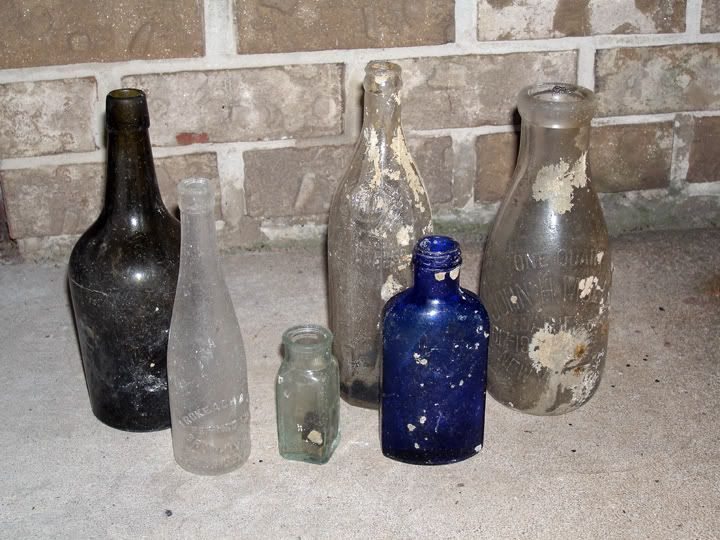
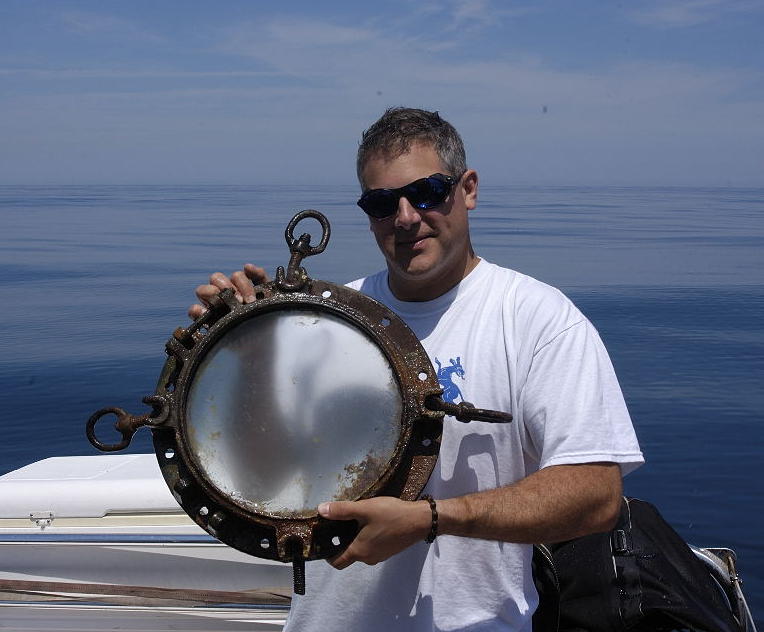
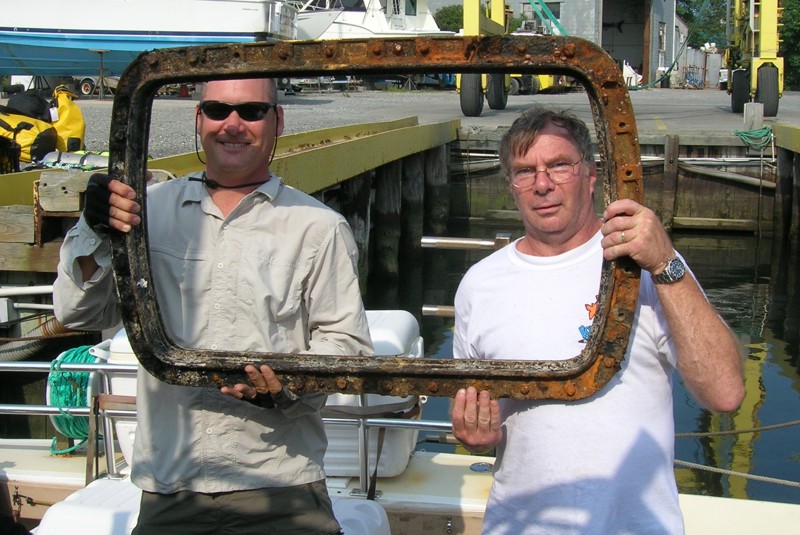

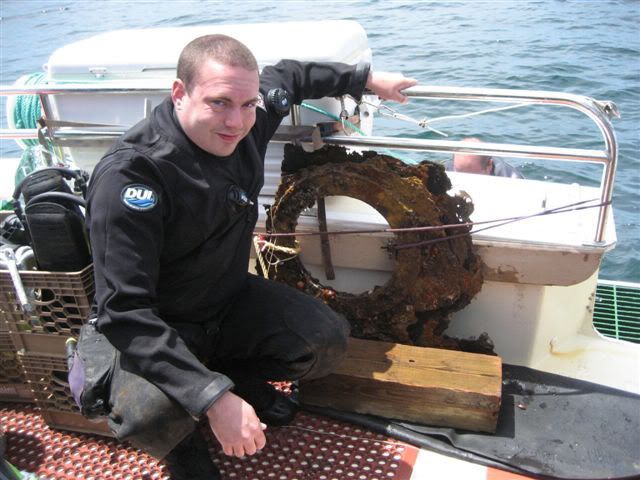

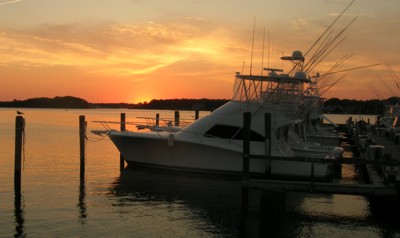 The USS San Diego was a WW I cruiser believed to have struck a mine back in 1918. The wreck now lies upside down in 110 ft of water. Since I’ve never been to this wreck I was looking forward to the trip. When we left the inlet there were 3-4 foot of chop with a long period swell underneath. Richie was kind enough to drive while the rest of us tried to catch some rest. By the time we reached the wreck the chop was dying down, but the swell was still apparent. When Brandon and Danny jumped in to tie in, they revealed a strong surface current. When they popped back up a few minutes later, they reported that the visibility could only be measured in inches, and the shot had been dragged off the wreck.
The USS San Diego was a WW I cruiser believed to have struck a mine back in 1918. The wreck now lies upside down in 110 ft of water. Since I’ve never been to this wreck I was looking forward to the trip. When we left the inlet there were 3-4 foot of chop with a long period swell underneath. Richie was kind enough to drive while the rest of us tried to catch some rest. By the time we reached the wreck the chop was dying down, but the swell was still apparent. When Brandon and Danny jumped in to tie in, they revealed a strong surface current. When they popped back up a few minutes later, they reported that the visibility could only be measured in inches, and the shot had been dragged off the wreck.